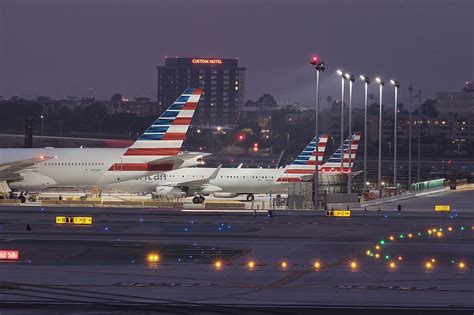Chicago is the third-largest city in the United States and one of the most populous cities in the world. It is home to one of the world’s busiest rail systems, yet surprisingly, most of the city’s train lines are not underground.
This is largely due to the fact that Chicago is built on flat terrain, unlike the hilly terrain of cities such as New York and London where underground trains are more commonplace. Additionally, the cost of building and maintaining an underground train system in a city as large as Chicago would far exceed the cost of building a surface-level system.
Chicago’s flat terrain also makes it a prime location for freight railroads. Many of the city’s freight lines run alongside the passenger lines and are too costly to reroute underground. Additionally, Chicago’s unique grid system of streets allows for trains to easily travel above ground from neighborhood to neighborhood.
Another factor that makes an underground train system unfeasible in Chicago is the city’s large network of rivers, canals, and lakes. These water sources would need to be avoided or bridged, which would make the cost of tunneling through the city’s bedrock even higher.
Chicago is not completely without an underground train system, however. The city’s two busiest train lines, the Red Line and the Blue Line, are both operated underground. These lines were built decades ago, when the cost of constructing underground tunnels was less expensive than it is today.
Chicago’s rail system is an impressive feat of engineering, but it is likely to remain a surface-level system for the foreseeable future. The cost of constructing an underground system is prohibitively expensive, and the city’s unique geography is more suited to a surface-level layout.
Exploring Chicago’s Reasons For Not Having An Underground Train System
Exploring Chicago’s Reasons for Not Having an Underground Train System
Chicago is one of the largest cities in the United States, but it has one major difference from many other large cities: it does not have an underground train system. This is in contrast to cities like New York, Boston, and Washington D.C., which all have extensive networks of underground trains. The lack of underground trains has been a source of confusion and curiosity for many, so we took a look into the reasons why Chicago has no underground trains.
The most commonly cited reason for the lack of underground trains is the city’s geography. Chicago is located on a flatplain, so the city’s infrastructure isn’t naturally suited to an underground train system. Furthermore, the city is situated on the shore of Lake Michigan, which further complicates the construction of an underground railway system. For these reasons, it was simply too difficult and costly to create an underground system for Chicago.
Another reason is the sheer cost of creating an underground railway system. Constructing just one mile of underground railway can cost hundreds of millions of dollars, and the cost of creating an entire system would be astronomical. Furthermore, the city’s topography and geography make it even more difficult and expensive to build an underground system.
Finally, Chicago’s public transportation system is well-developed and efficient. While an underground system might be seen as a luxury, it is unnecessary in Chicago because the city already has an extensive network of bus, rail, and elevated lines. Thus, there is really no pressing need for an underground railway system.
Overall, the lack of an underground train system in Chicago can be attributed to a combination of factors, including the city’s geography and topography, the high cost of creating such a system, and the city’s existing public transportation system. Thus, it is unlikely that an underground railway system will be built any time soon in Chicago.
Understanding The Benefits Of An Above Ground System In Chicago
Chicago is one of the largest cities in the United States, and its mass transit system is widely regarded as one of the best in the world. But unlike many other major cities, Chicago does not have an underground train system. So why is Chicago train not underground?
The answer lies in Chicago’s geography and history. Chicago is built on a flat plain, and is the only major city in the US where an underground train network is not feasible. The high cost of tunneling and constructing an underground system would be prohibitively expensive, and the benefits of such a system would be minimal. That is why Chicago has chosen to build an above-ground train system instead.
Chicago’s above-ground system has several advantages over an underground system. First, it is much less expensive to build and operate. The overall cost of the system is much lower than an underground system, and this savings is passed on to passengers in the form of lower fares. Additionally, the above-ground system is easier to maintain, as it does not require expensive tunneling or maintenance work.
The Chicago Transit Authority (CTA) also makes use of the above-ground system to create a unique sense of place in the city. The elevated train lines provide a convenient way for commuters to travel around the city and also provide a unique aesthetic that helps define Chicago’s skyline. This sense of place is something that cannot be replicated in an underground system.
Finally, the above-ground system also provides a range of benefits in terms of safety. The system is well-lit and visible, which helps increase public safety. Additionally, the elevated train lines are largely immune to flooding, which can be an issue in underground systems. In addition, the system has proven to be much more reliable than underground systems, with fewer delays and disruptions.
The Chicago Transit Authority’s above-ground system has been a resounding success, and has proven to be a cost-effective and reliable way to move around the city. It provides a unique sense of place and helps to define Chicago’s skyline. Additionally, it is safer and more reliable than an underground system. For these reasons, the CTA’s above-ground system is a great example of how public transportation can be successful without the need for an underground system.
 Road Topic Tourism & Travel
Road Topic Tourism & Travel




